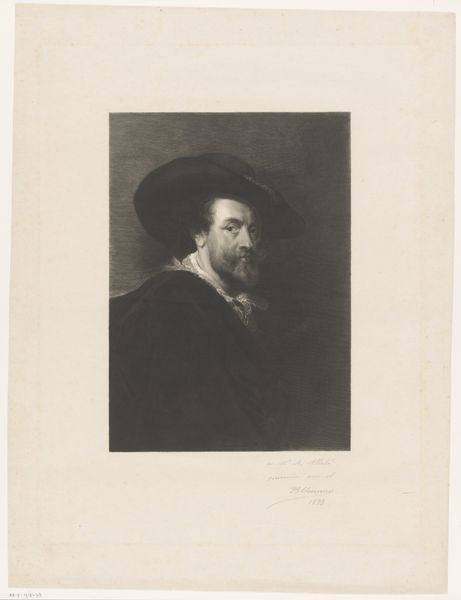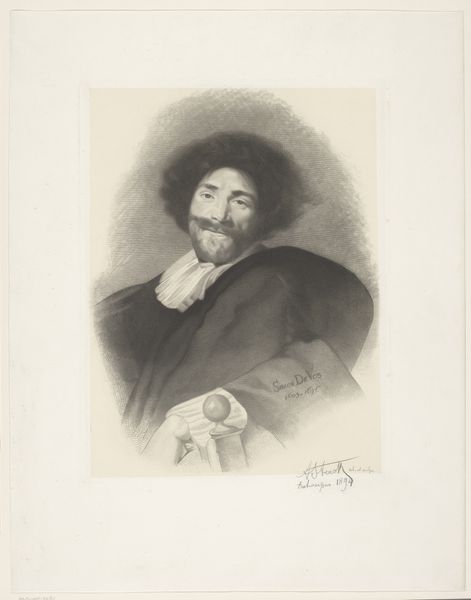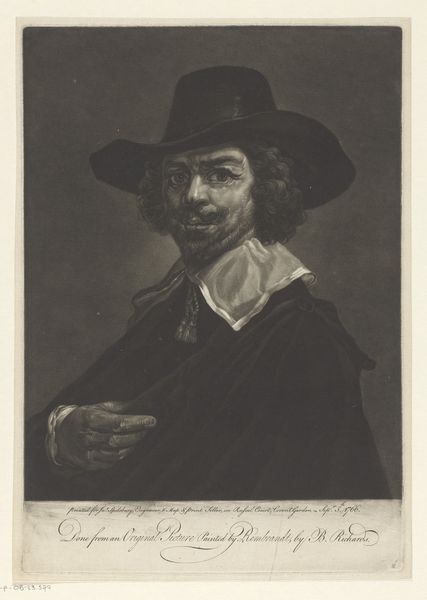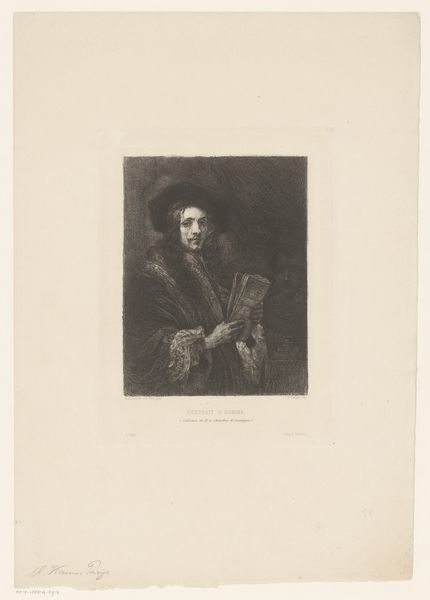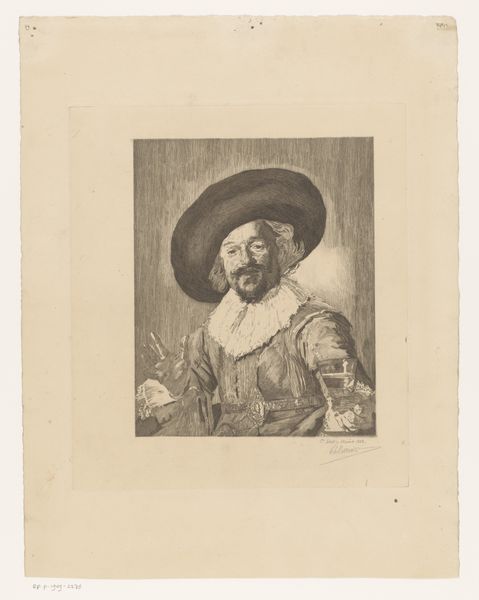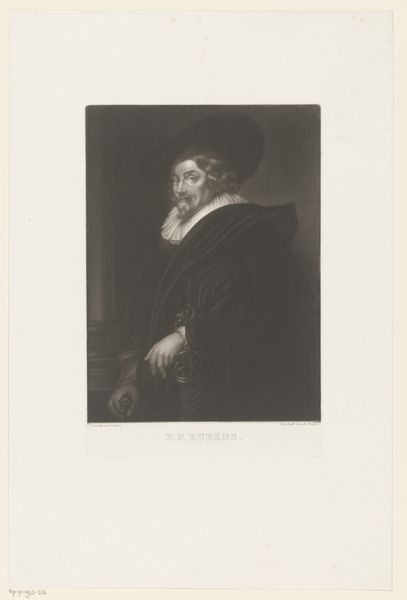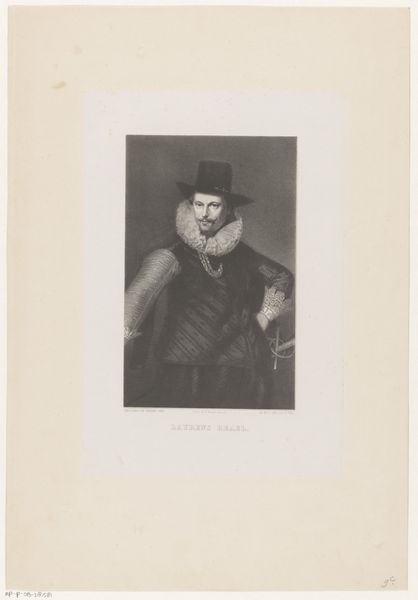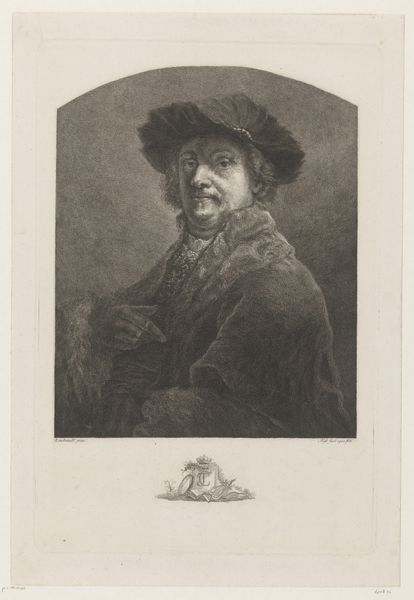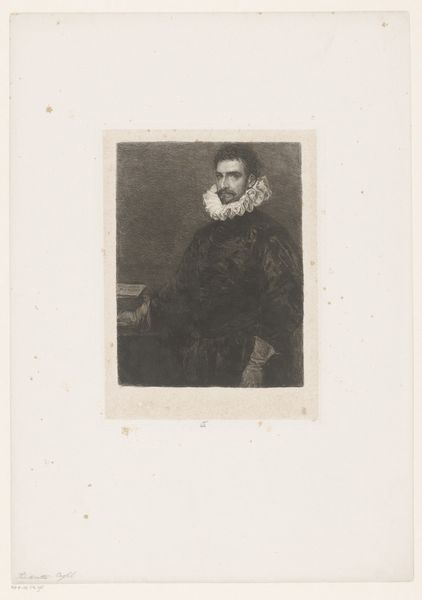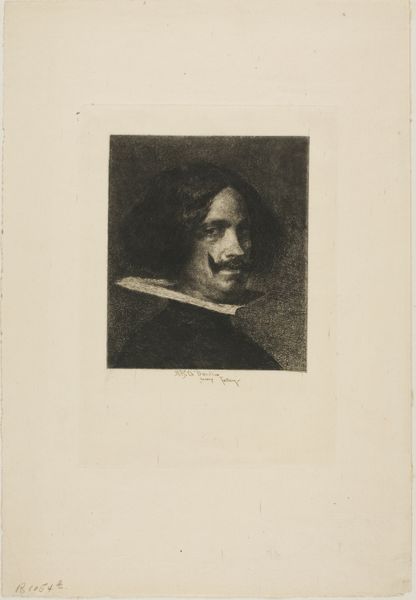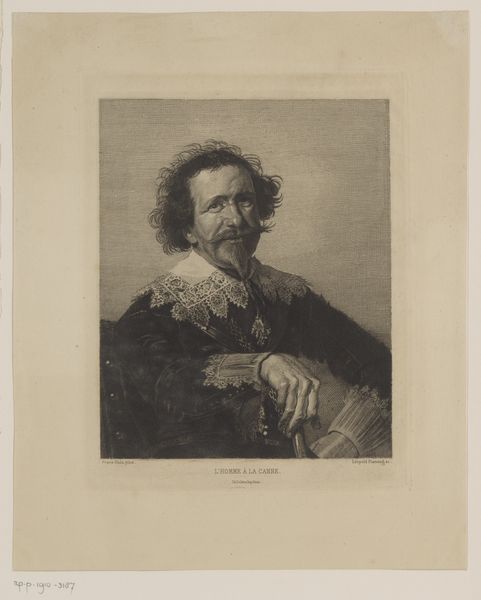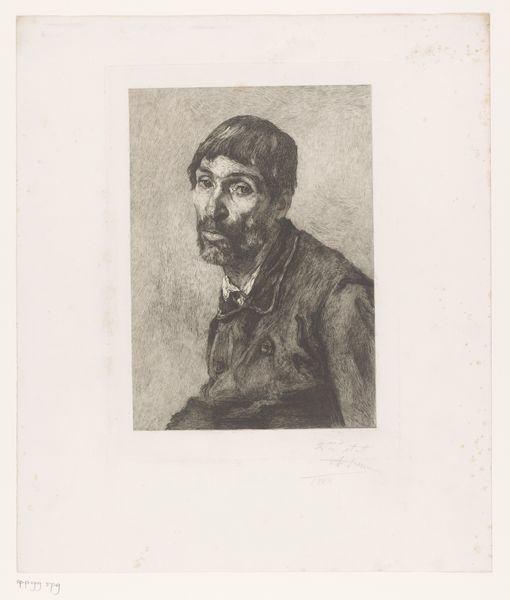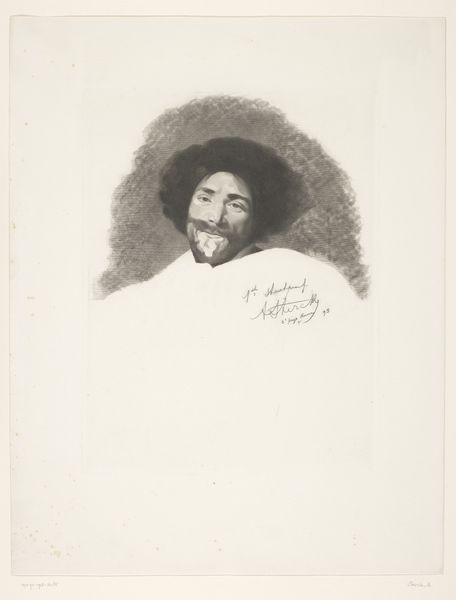
print, etching
#
portrait
#
print photography
# print
#
etching
#
pencil drawing
#
realism
Dimensions: height 360 mm, width 240 mm
Copyright: Rijks Museum: Open Domain
Editor: So, this is Willem Philip van der Veken’s "Portret van Simon de Vos", created as an etching print in 1885. It’s a rather striking portrait – almost photographic in its realism. It makes me wonder about the relationship between portraiture and social status during this period. What can we gather about its social and historical context from looking at this print? Curator: A key question! Consider the role portraiture played historically. It wasn’t just about capturing a likeness; it was deeply intertwined with power and social identity. The ability to commission a portrait, especially a printed one that could be widely circulated, signified a certain level of societal standing. Editor: Interesting, it feels like an earlier version of mass media! But Simon de Vos, the sitter, lived much earlier... how does the date 1885 complicate things? Curator: Precisely! It's a reproduction of an earlier portrait, making us consider the revival of interest in 17th century masters in the late 19th century. There was a desire to connect with a perceived 'golden age.' The 'original' artist attained enough historical importance to warrant van der Veken creating and distributing this print. How might that impulse affect its reception and purpose? Editor: It creates a sort of dialogue across centuries, doesn't it? Presenting the past through the lens of the present, and influencing public taste? Curator: Exactly. Van der Veken wasn't merely copying; he was actively shaping how Simon de Vos was perceived. The choice of etching, which mimicked the qualities of old master drawings, further reinforces this connection. This demonstrates the agency that printmakers held within the broader cultural landscape of image circulation. Editor: So, what initially seems like a straightforward portrait is actually loaded with meaning about artistic legacy and the politics of cultural memory. It goes to show, never judge a portrait by its subject only. Thank you for sharing that perspective! Curator: And thank you for those sharp initial observations and perceptive questions! Looking closer together at the circumstances of an image transforms what we initially perceive.
Comments
No comments
Be the first to comment and join the conversation on the ultimate creative platform.
